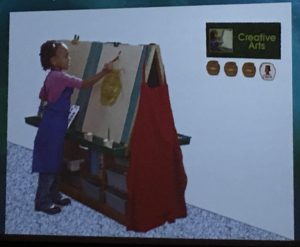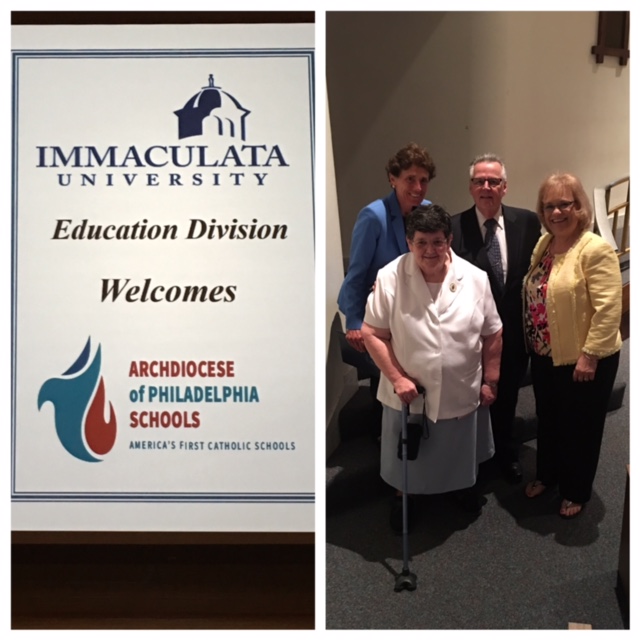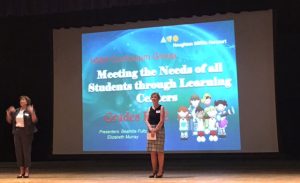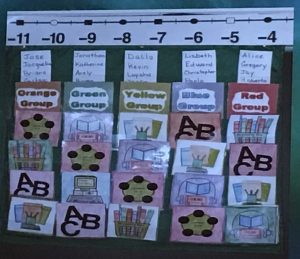The following article was contributed by Pam Bernards, Ed.D., NCEA Director of Professional Development.
I recently had the privilege of attending the Archdiocese of Philadelphia’s Activities, Scribbling and STREAM—Oh, MY! Early Childhood Conference. It was exciting to be with the 200+ Early Childhood educators gathered at Immaculata University in Immaculata, PA. Welcoming the attendees were the new University President, Barbara Lettiere, Dean of Graduate Studies, Dr. Tom O’Brien and Sr. Edward Quinn, Assistant Superintendent for Curriculum, Instruction and Assessment for the Archdiocese of Philadelphia.
One of the highlights of the day was the presentation by Elizabeth Murray and Bebe Fulta entitled, Meeting the Needs of all Students through Learning Centers. The ideas presented were in line with the National Association for the Education of Young Children’s (NAEYC) position statement on developmentally appropriate practice that teachers need to “create an intellectually engaging, responsive environment to promote each child’s learning and development” (NAEYC 1997, 11). Further support for learning centers is provided by ASCD (2007, 10) in that children benefit from “supportive environments that nurture their social, emotional, physical, ethical, civic, creative, and cognitive development.”
The presenters began by describing why learning centers are important and identified the following reasons:
- Fun!
- Learning centers can help meet the diverse needs and skill levels of all young children
- Children learn by doing
- Review of basic skills
- Children actively construct knowledge by interacting with the world around them
- Teachers can facilitate learning by providing organized centers that encourage independent and cooperative activity
Central to Learning Centers is the incorporation of a Small Group Instruction Table. Small group provides the teacher with the opportunity to work with a group of students on a particular skill and activity in a setting that allows for more individualized instruction. Teachers also have the opportunity to provide immediate feedback, more closely monitor student progress and make needed changes to instruction. Several ideas offered for the small group instruction table include:
- Student Book with Guided Instruction
- Guided Reading with Leveled Readers
- Vocabulary/Word Study Activities
- Math Activities
- Writing Activities
- Digital Activities
- Science Activities
In addition to exploring ideas that can be incorporated into small group instruction, the presenters acknowledged that additional activities are needed for students who are not working directly with the teacher in small group. Emphasis was placed on reading, which was identified as the best activity for young children. Suggestions were provided for other independent work centers such as:
- Reading and Listening Center
- Blocks & Building
- Creativity
- Dramatic Play
- Math
- Science
- Technology
Murray and Fulta noted one of the next things to consider is Grouping and Scheduling. The optimal number of centers recommended was four to five groups, with no more than six students in a group. The composition of the groups should be as homogeneous as possible. At least two groups should be seen by the teacher each day with struggling students receiving more sessions each week in order to provide the additional support needed.
When considering the schedule and structure of learning centers, consistent routines were emphasized. There are many ways to communicate the Learning Center schedule for the day. Pictured below is one example the presenters shared. This teacher has chosen to have five groups with four students in each group. A visual representation of each of the Learning Centers communicates the schedule for the day to each of the groups. This strategy allows the teacher to update the schedule each day with ease and provides flexibility in changing the grouping as students’ skill mastery varies from skill to skill.
Expectations for working independently, processes for moving between centers, and center selection are critical. When students are working independently, they will have questions. There is the potential for the teacher to be interrupted frequently. One anecdote to this is the “Ask three before me” rule. Students are to ask three students who are also doing independent work before asking the teacher. This minimizes interruptions and builds confidence in students who can be of assistance to others.
Students should know how many students can be at a center at a given time if they are allowed to choose their center. One popular suggestion for center selection shared by Murray and Fulta is pictured below. The Creative Arts Center can have a maximum of four students. This is denoted by the four barrels. This student has used a laminated picture of herself to note that she is at this station. With three empty barrels remaining, an additional three students can still choose this center.
The presenters offered several options for Learning Center Management. The first option was the use of homogenous groups. The groups rotate through the centers together for a preset time period, with one of the centers being the teacher led small group table. The second option is that of heterogeneous groups. The groups rotate through the centers with either a fixed or flexible time. In this option, the teacher pulls flexible groups of students for Guided Reading or other work. The third option is to all the students to select their activities and the fourth option is to have a check list in a Grab and Go set-up.
This is just a small snippet of the presentation offered to those gathered. The attendees were treated to two additional sessions that were as equally engaging and treated to what was described as an awesome lunch. The day was capped off with prizes donated by the ten vendors who had displays of resources and materials designed for the early childhood student. It was a great day to be in the Archdiocese of Philadelphia!



